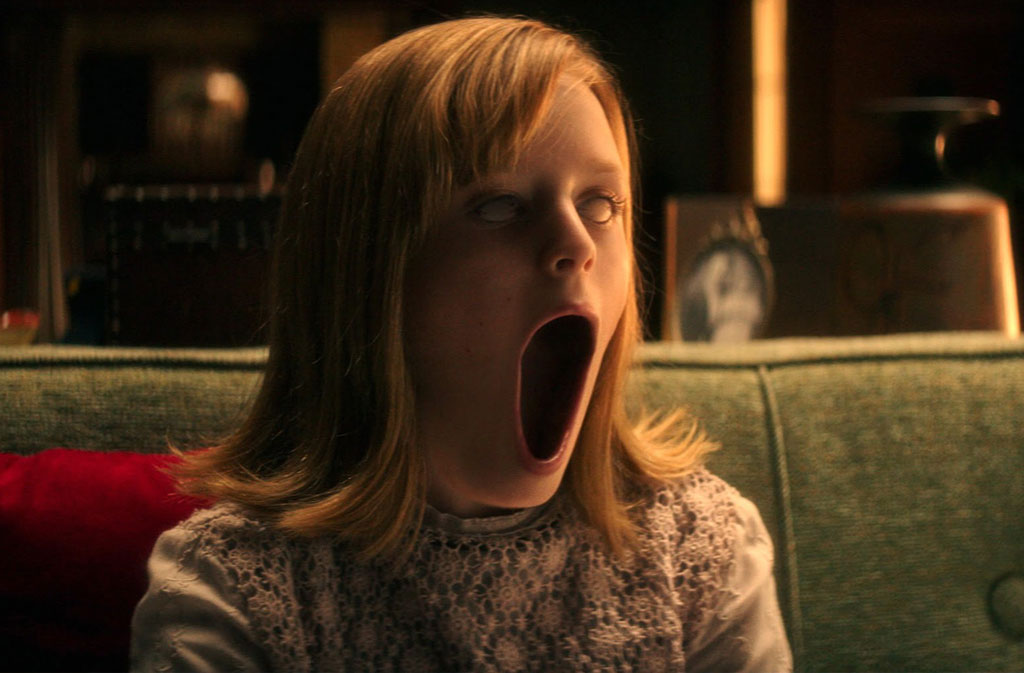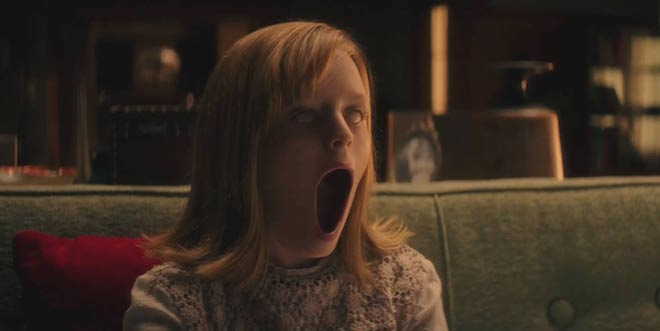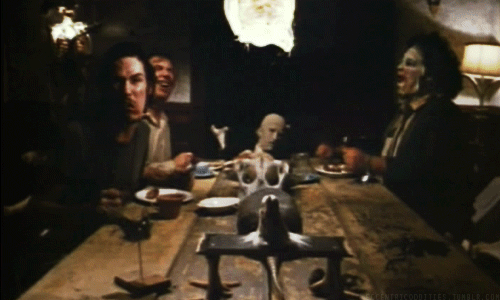‘Ouija: Origin Of Evil’ And Why The Horror Genre Will Always Love B-Movies
These days action movies have to be blockbusters and dramas have to be Oscar contenders. But when it comes to horror, the stakes aren’t that high.

I walked out of the latest Ouija film, Ouija: Origin of Evil, with sweaty palms and my hair standing on end. Later that night, it would also have me waking up and picturing doll-like girls standing just outside my peripheral vision. But the thing that really bothered me was that this film had gotten under my skin without being particularly original.
It was an okay, pretty good movie, but it wasn’t anything new. In fact, it was kind of impressive to me that despite its predecessor getting panned — it is currently rated 7 percent on Rotten Tomatoes — it got a follow-up.
To make money these days, Hollywood wants films to double down: action movies have to be blockbusters and dramas have to be Oscar contenders. But when it comes to horror, the stakes aren’t that high. So why does horror land this Get Out of Jail Free card? Why can it still make middling movies and only sometimes turn out a classic?
–
Ouija: Origin Of Evil And The B-Movie
Ouija: Origin of Evil sets up the events of the 2014 Ouija film, going back 50 years to where everything went wrong for the Zander family. Doris Zander (Sierra Heuermann), her teenage sister Paulina (Annalise Basso) and their mother Alice (Elizabeth Reaser, who to me will forever be the lady from the ferry accident that Alex Karev falls in love with in Grey’s Anatomy) are making ends meet by holding fake seances for people wishing to contact their dead loved-ones. While Mother Dearest is ringmaster to the show, Doris and Paulina make the occult happen from hiding places in sideboards and behind curtains.
Oh, and there’s a dead dad who is introduced with blunt, lingering shots of photo frames. (Many of the plot points are introduced like this, like playing plot bingo.)
Understandably, this family is not making fat stacks tricking people and the household bills are piling up. Alice makes an impulse purchase of a ouija board to zhoosh up the routine for customers. Doris is promptly possessed by a spirit called Marcus. Doris is super chill about being a vessel. At first, her newfound chum is a helluvaguy who helps her with homework and hooks her family up with some cash hidden in the walls of their house. Their money problems are solved! Great! Movie done! Let’s go home! JK, that’s not the only thing hidden in the walls!
Marcus soon tires of doing long division and turns out to not be so chill. Soon after he’s got Doris bent over backwards like an over-enthusiastic yoga teacher helping you with Wheel Pose.

Hey.
Mike Flanagan (Hush, Oculus and Absentia), who frequently co-writes his screenplays with a collaborator directed Ouija: Origin of Evil. His movies often have female leads (though usually all white), but it often feels that to make space for the women’s roles and to fuel their motivations, he has to explain the absence of a dude and their impact.
In Hush, Kate Siegel’s Maddie is constantly being questioned about her decision to live alone in the woods without a man for protection. In Ouija: Origin of Evil, their dead dad is still a heavy presence and influences the women’s actions. Yet, Flanagan’s men also tend to be bad guys, and the women are fighting back against the physical and metaphorical patriarchy. Come to think of it, Doris is a young girl whose body is literally possessed by an entitled dead dude…
–
What Is A B-movie And What Makes Them Different?
The B-movie has its origins in the ‘50s as a kind of B-side to big budget ‘A’ films, or as one half of a double bill. The definition has expanded since then as The Guardian’s Phillip French explains: “Fairly rapidly, ‘B-picture’ became a pejorative term. ‘B-movie dialogue’ meant a string of clichés. ‘B-movie plots’ were predictable dramas retreading familiar stories.”
Yet, while they could be movies-by-numbers to some extent, there were also a place for experimentation and freedom. “Numerous directors who emerged into the mainstream multi-million dollar movie world looked back affectionately to the freedom they enjoyed (though not the small cheques they received) working on Poverty Row,” French says.
It continues to be a breeding ground for emerging filmmakers. Film critic Roger Ebert wrote in his 1974 review of The Texas Chainsaw Massacre: “Horror and exploitation films almost always turn a profit if they’re brought in at the right price. So they provide a good starting place for ambitious would-be filmmakers who can’t get more conventional projects off the ground.” This is still true today.

Dinner’s ready!
Hollywood rarely takes risks on emerging filmmakers who aren’t guaranteed to generate hundreds of millions of dollars, but Netflix doesn’t share this fear. They’ve come to recognise the importance and potential of these types of movies and TV shows. Netflix have spoken plainly about getting behind mid-level films because Hollywood no longer is.
Ted Sarandos, Netflix’s chief content officer, said in 2015: “There are movies that people really want to watch that are no longer being made and no longer being put in movie theatres because studios don’t want to make them anymore”. Netflix wants to fill that void. It’s also why Netflix has refused to be drawn into the traditional ratings system by declining to reveal their viewership numbers. As Sarandos says, “ratings keep people from taking risks.”
–
It Follows… The Money
Horror is still considered a B-movie genre in many respects. Directors can make a good or okay horror and it’s not career-ending. With the small budgets taking the pressure off turning huge profits, we’re getting more interesting narrative and innovative films. It’s perhaps why it’s become a hotbed for so many vibrant, original and surprising indie horror films — like It Follows and The Guest.
Partly, it’s to do with money. Mainstream horror has become a marketing exercise of “cheap, fast, good.” The Ouija films, along with Battleship and the Transformer series, were born out of a Michael Bay/Universal deal with Hasbro to movie-fy their games cupboard.
The production budget for Ouija (which only came out two years ago) was $5 million. Domestically in the US it made just over ten times that at the box office — almost $51 million. And the foreign market matched it, raking in additional $53 million. The sequel is looking to do even better — its opening weekend in the US is projected to cover its production costs (and its Rotten Tomatoes rating is much better at 81 percent).
In recent years, Hollywood has become more dependent on overseas markets to turn a profit on films. One country’s bomb is another country’s cash cow. Currently the biggest international box office earner, China, is predicted to be the largest source of box-office income by 2018. Even Carrie, which bombed pretty hard, only making $35 million off its $30 million production budget, picked up respectable dollars internationally — a further $49 million.
Yet horror has been in on the Second Life of movies long before Hollywood was capitalising on foreign markets. The Book of the Dead received mild success in 1981, but when re-released and distributed worldwide a year later as The Evil Dead it became a hit. B-movie spoof The Rocky Horror Picture Show only became a cultural phenomenon when it was relaunched, a year after it flopped, as a midnight movie and audience participation took hold.
Midnight movies are perhaps responsible for the enduring appeal of B-movie horror and sci-fi. In the early ‘50s the Screen Actors Guild “agreed to a residuals payment plan that greatly facilitated the distribution of B movies to television”. This led to local US TV stations “showing inexpensive genre films in late-night slots”. The horror genre was a perfect fit for the time slot and gave rise to its cult following, which took both the bad and the good. The key aspects of the cult film audience encouraged “repeat viewing and social interaction”.
–
Why We Keep Revisiting The Same Stories
The horror genre and B-movies historically have also offered the opportunity for social commentary through allegory. A chance to critically examine social issues through an unserious eye.
This perhaps explains why horror fans are happy to see the same storylines played out. We might have seen and heard this story before. We might have seen and heard the scares before. But we might not have seen either in this context. Even if there aren’t overt or intentional moral layers played out, films made in 2016 makes have a different makeup to those in 1976.
Iranian filmmaker Babak Anvari’s Under The Shadows, which Netflix recently bought the worldwide distribution rights to, is a horror tale set in Tehran during the Iran/Iraq war of the ‘80s. “This is a personal story about what I remember as a child and what my family went through, other Iranians went through,” he told Business Insider. “I used all those memories and put a horror twist on it.”
As viewers, we get to explore serious themes through the lens of a relatable medium. In some ways we get much closer to the personal experiences — we get lived experiences. Fear is a universal force and feeling. On the other side of the world we might find it hard to relate to a war zone. Yet we can empathise with feelings of terror from more abstract threats like evil spirits.
This is demonstrated in various films including 1968’s Night of the Living Dead, which had civil rights overtones, and Invasion of the Body Snatchers (1956), which was viewed as a commentary on communism and McCarthyism. More recently, Scream 4 and Unfriended explored millennials obsession with social media. While the latest Godzilla takes aim at the Japanese government’s response to the Fukushima disaster.
As French writes: “Provided they delivered the generic goods, telling fast-moving stories in the form of westerns, horror flicks, thrillers, adventure yarns, slapstick comedies, swashbucklers and romantic melodramas, the B-movie-makers could inject social criticism, satire, surreal comment, and look with a less varnished eye on American society.”
While the Ouija: Origin of Evil story doesn’t offer up much direct commentary, it’s cultural context could. With more films being based off toys and games — like Hasbro’s games closet and Mattel’s Hot Wheels — perhaps it’s just proving a hypothesis: “Yep, movies based on games do make loadsa money.”
–
Ouija: Origin of Evil is out now.
–
Anna Horan is a writer and editor from Melbourne. She’s written for places like The Big Issue and Broadsheet, and used to be the editor of TheVine. She tweets @annahoran.